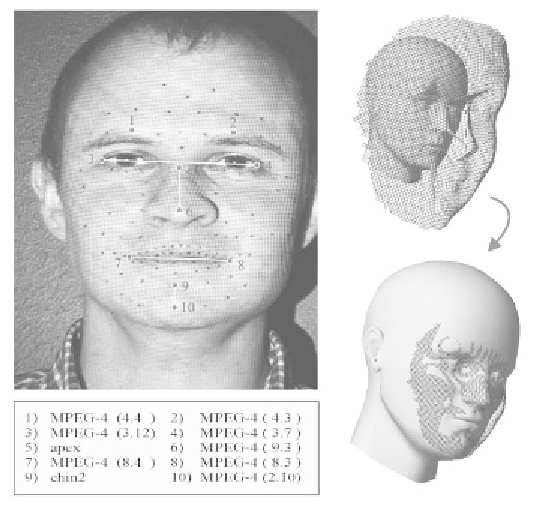Game Development Reference
In-Depth Information
Figure 4. A first step in the deformation of the generic head to make it fit
a captured 3D face is to globally align the two. This is done using 10 feature
points indicated in the left part of the figure. The right part shows the effect:
Patch and head model are brought into coarse correspondence.
(these 10 points are indicated in Figure 4). These have been indicated manually
on the example faces, but could be extracted automatically (Noh et al., 2001).
After this initial transformation, the salient features may not be aligned well, yet.
The eyes could, e.g., be at a different height from the nose tip.
In order to correct for such flaws, a piecewise constant vertical stretch is
applied. The face is vertically divided into five intervals, ranging from top-of-
head to eyebrows, from eyebrows to eye corners, from eye corners to nose tip,
from nose tip to mouth corners, and from mouth corners to bottom of the chin.
Each part of the transformed model is vertically scaled in order to bring the
border points of these intervals into good correspondence with the example data,
beginning from the top of the head. A final adaptation of the model consists of
the separation of the upper and lower lip, in order to allow the mouth to open. The
dividing line is defined by the midpoints of the upper and lower edges of the mouth
outline.

Search WWH ::

Custom Search